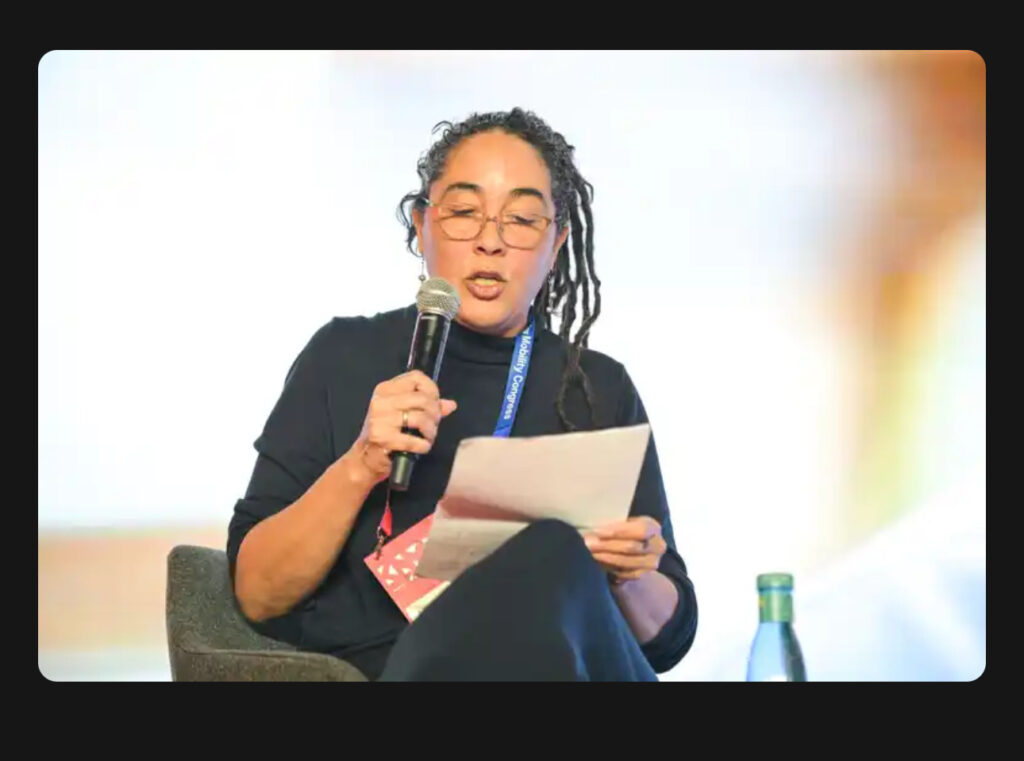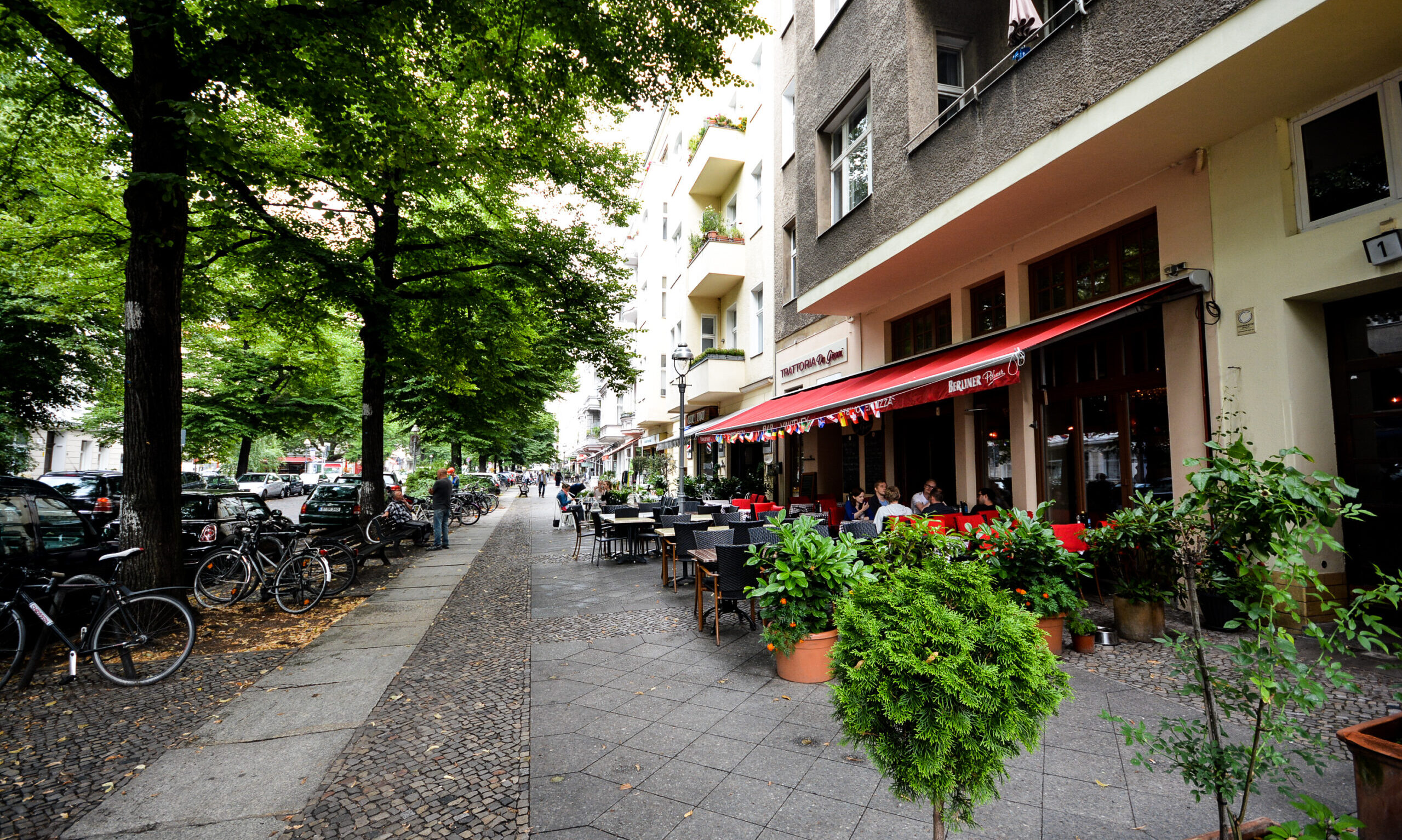
This past September 2025, I enjoyed visiting Katowice for the first time to take part in the New Mobility Conference in Katowice in September 2025, organized by PSNM. I was thankful for the opportunity to moderate the ‘Step by Step: Walking as a Tool for Urban Change’ panel as well as appear on the panel ‘Accelerating Inclusivity & Diversity: Democratizing Mobility’.

As I emphasized on both panels I participated in, we in these rooms are the ‘mobility-minded ones’. We are the ones working with mobility and thinking about these issues, challenges, and potential solutions on a daily basis. It is our responsibility to also bring the understanding, awareness as well as enthusiasm we share in these spaces to the greater public.
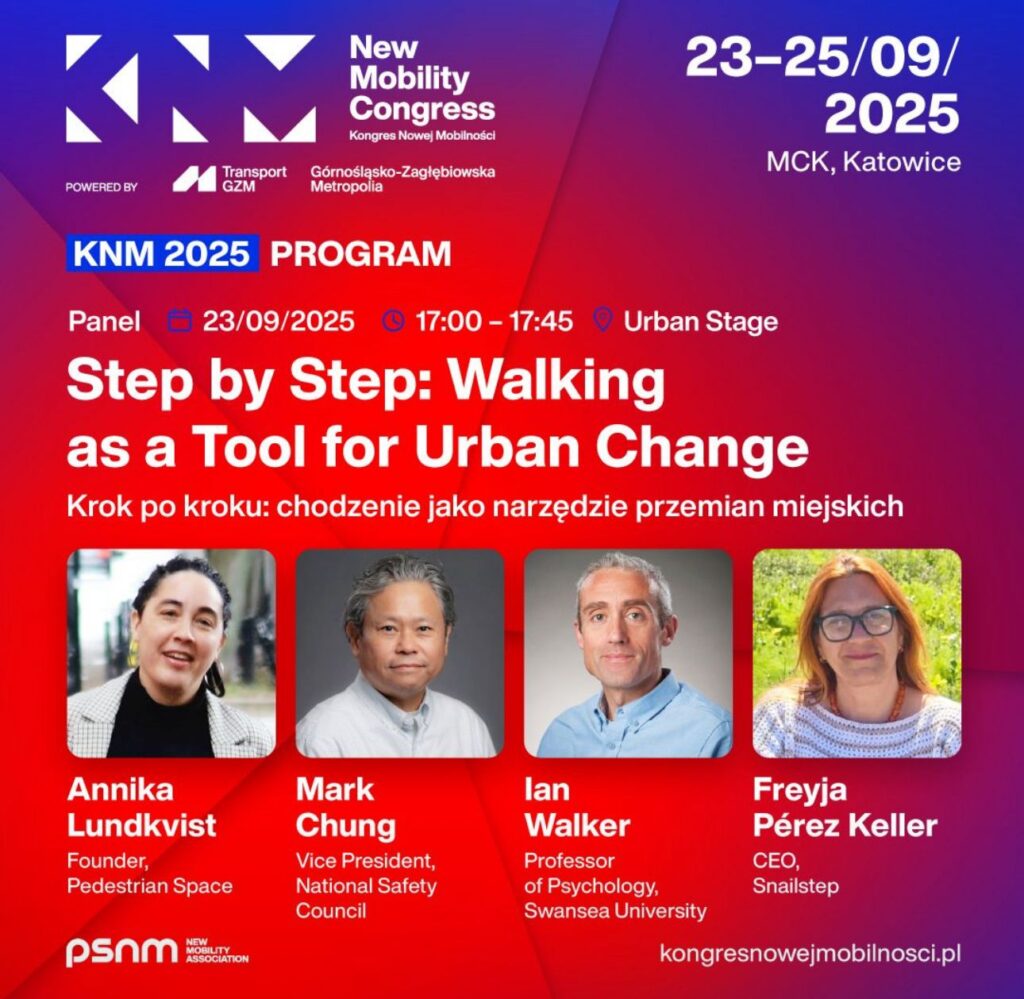
Panel: Step by Step: Walking as a Tool for Urban Change”, September 23, 2024, from 17:00-17:45 on the Urban Stage.
Session Moderator: Annika Lundkvist –Founder, Pedestrian Space.
Speakers:
- Mark Chung – Vice President, National Safety Council
- Ian Walker – Professor of Psychology, Head of the School of Psychology, Swansea University
- Freyja Perez – CEO, Snailstep
- Frank Joneit – Team Regionale Mobilitätsentwicklung, Referat Mobilität, Regionalverband Ruhr
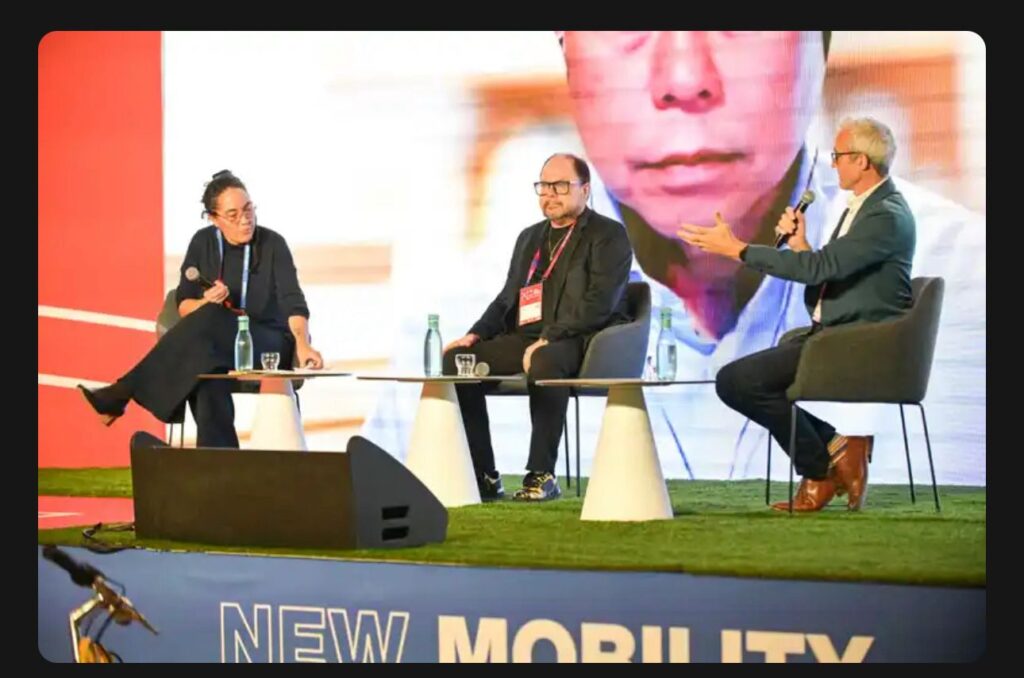
During the ‘Step by Step: Walking as a Tool for Urban Change’ panel we discussed many issues, including:
- Motonormativity
- How environments play a role in facilitating or hindering walking
- The heavy focus in transport research on work commutes, but the reality that most trips are for leisure
- Social aspects of travel that need to be emphasised
- Issues of increasing pedestrian fatalities in the USA (particularly in underserved communities)
- How panelists interpret ‘democratization of mobility’
- How walking is not just about those who do not have a car, but is the backbone of mobility
- How good cycling infrastructure and good pedestrian infrastructure (separated) are critical)
- Prioritizing the needs of the handicapped, who are often forgotten
- How the car is, for some groups, a symbol of status
- The reality that at these conferences we are often ‘preaching to the choir’ and the need for us professionals, practitioners, and advocates to expand our reach
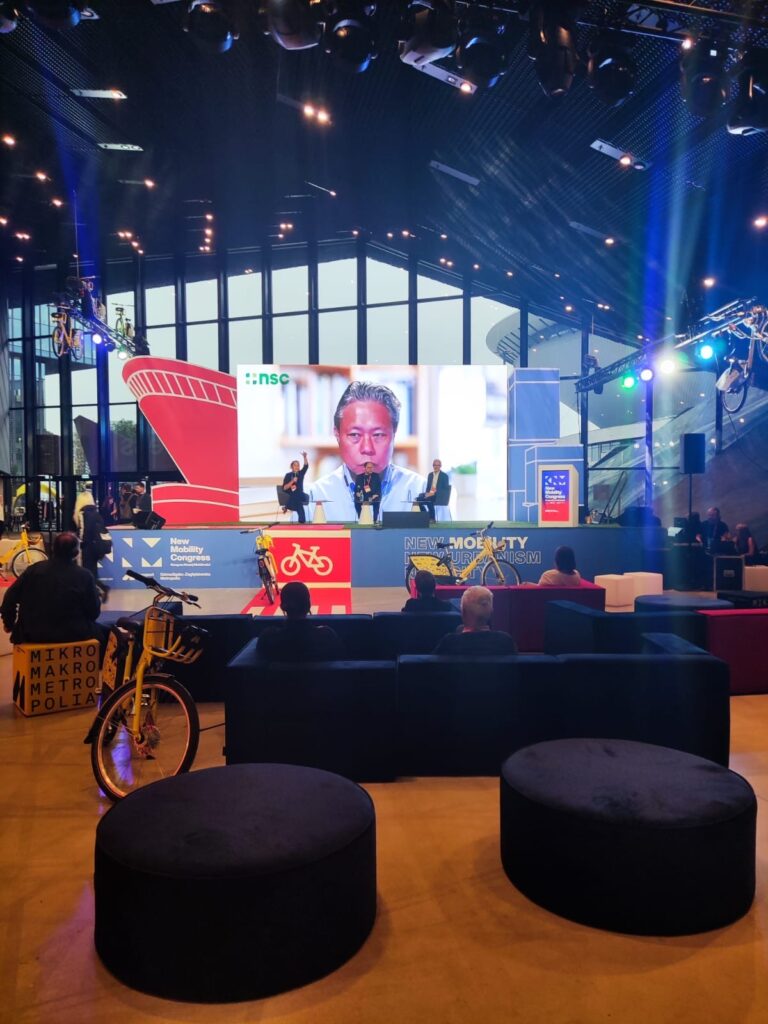
This was my first time moderating a panel! Thank you to PSNM for the opportunity and to panelists Frank, Freyja, Mark, and Ian for being a superb, very thoughtful, and engaged panel!
Panel: ‘Accelerating Inclusivity & Diversity: Democratizing Mobility’
The next day, I was on a panel led by Doug Gordon and with fellow panelists Tomasz Wojtkiewicz, Karen Vancluysen, Geert Koops, and Ian Catlow.

Together, we explored issues of inclusivity and diversity in mobility and various barriers preventing access to safe, convenient, and sustainable transport for all.
I appreciate that on the panel, issues of privilege came up, the privilege often of decision makers, and even sometimes in the composition of panels.
The issue of who is represented in the discussion (who is ‘sat at the table’) and who is not was also importantly highlighted, as was the reality of needing to confront our biases to be able to understand what barriers we ourselves might carry into our work.
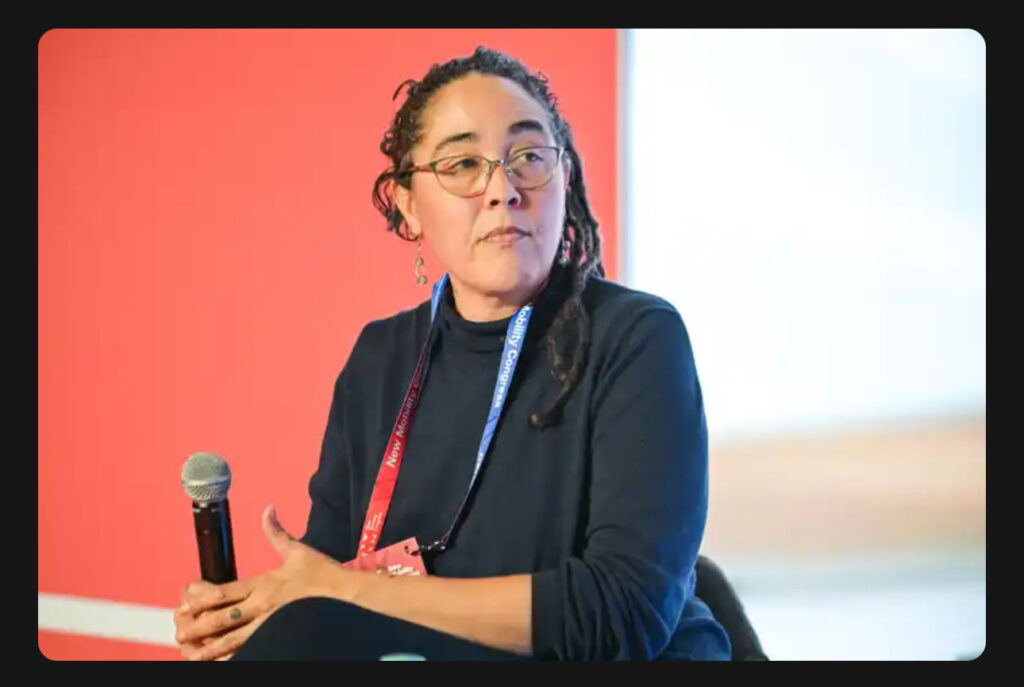
Just the evening prior, I had been in a very interesting dialogue with Frank Joneit (who was on the ‘Walking as a Tool for Urban Change’ panel with me a day prior) about ‘diversity’ and what we think of and mean when we bring it up, and how this can change based on geographic, social, and cultural context.
All of this ties into issues of mobility equity, mobility justice, transport exclusion, and inclusion that must be part of the discussion when we are working towards shifting the paradigm toward sustainable mobility.
There were many other themes discussed, and a wonderful audience with many thoughtful questions.
Thank you to Doug for excellent moderation and to fellow panelists and the audience for a great panel experience.

As I emphasized on both panels I participated in, we in these rooms are the ‘mobility-minded ones’. We are the ones working with mobility and thinking about these issues, challenges, and potential solutions on a daily basis. It is our responsibility to also bring the understanding, awareness, as well as enthusiasm we share in these spaces to the greater public.
Such events like these offer us the opportunity to connect, reconnect, cultivate solidarity, exchange ideas, and then go (hopefully motivated) back to our work.
I think we also can be inspired to bring these ideas to others around us who might not be as ‘mobility-minded’, but who nonetheless also have lives and routines shaped by mobility and are affected by the very ideas, transformations, and solutions we discuss at these conferences and in these rooms.
Thank you, PSNM, for the opportunity to moderate, join a panel, connect, and visit Katowice.
-Annika
